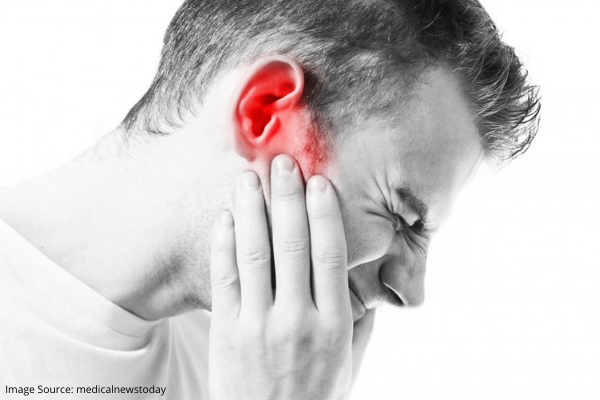

GETTING RELIEF FROM SWIMMER’S EAR PAIN

Swimmer’s ear, also known as otitis externa, is a painful infection or inflammation of the external ear or ear canal. The main function of the ear canal is to protect the middle ear from getting infected or intruded by foreign objects. The canal also produces a protective lipid layer called cerumen or earwax, which also serves in protecting the canal by trapping foreign elements. It also provides an acidic environment that isn’t conducive to growth of invading bacteria or fungi. The presence of tiny hairs in the outer canal acts as an additional barrier, by restricting and filtering out foreign matters from invading the inner ear.
Swimmer’s ear develops when water, dirt or debris get trapped inside the ear canal, leading to inflammation, swelling, tenderness and redness. Since it most often happens when water enters the canal, its known as ‘swimmer’s ear’. However one doesn’t need to be at the swimming pool to get swimmer’s ear.
When water gets trapped inside the canal, it becomes an ideal medium for bacteria and fungi to multiply in. Normal bacteria which exist on the skin invade the canal and cause infection. As the infection progresses, there is pain which gets worsened by using the jaw for chewing or talking. This condition needs to be treated as the infection may spread and could affect your hearing; of course it would also provide relief from the disturbing earache.
People who have very narrow or hairy ear canals are more prone to getting swimmer’s ear; people who get impacted ear wax stuck in their ears are also more likely candidates for outer ear infections. Symptoms are usually a combination of itching, moderate to severe pain, drainage and a feeling of ‘fullness’ within the ear. There might be some level of hearing loss too along with pain while chewing or wiggling the earlobe.
Usually swimmer’s ear subsides by itself with simple home remedies. However, you should take note and not cause any further injury or trauma to the ear by inserting sharp objects to relieve the itchy and painful feelings inside. Avoid using swimming pools or exposure to water till symptoms subside – opt for a shower instead of a soak in the tub. Applying heat to the area helps in relieving the pain. You could apply a warm dry washcloth against the ear for relief. This could lead to some dark-colored drainage due to melting earwax. Heating pads set on low can also be used, but with caution – its use should be avoided in children.
You could try restoring the pH of your ear canal with a white vinegar and rubbing alcohol mix (in equal portions) and rinse the ear to reduce swelling. This also makes the environment non-conducive for bacterial growth.
However, before trying any home remedies do show it to your doctor and proceed with his advice. Usually some topical ear drops of antibiotics, antiseptics, anti-inflammatory or acidifying agents may be prescribed for better management.














